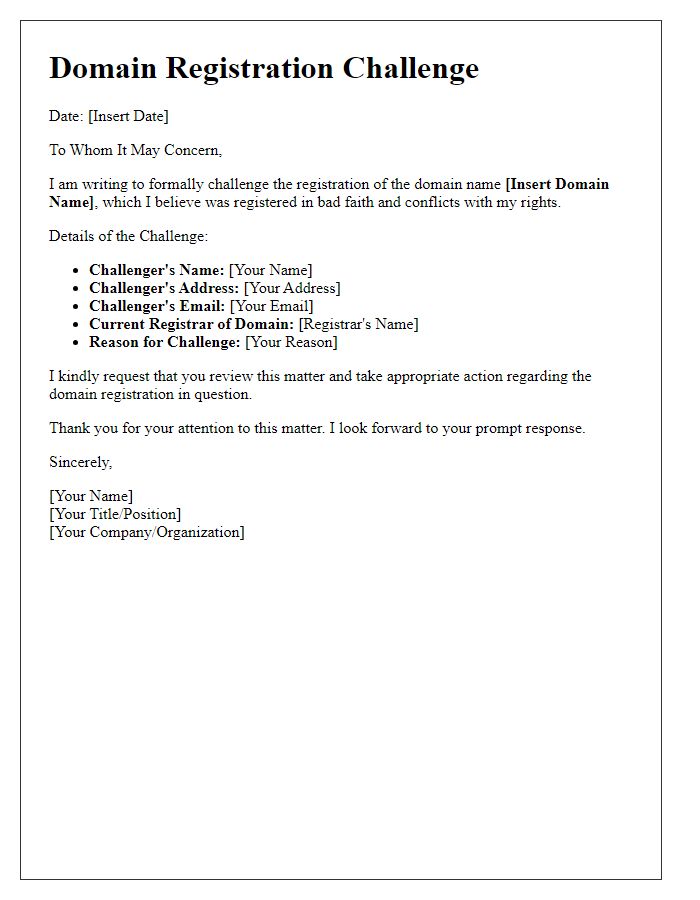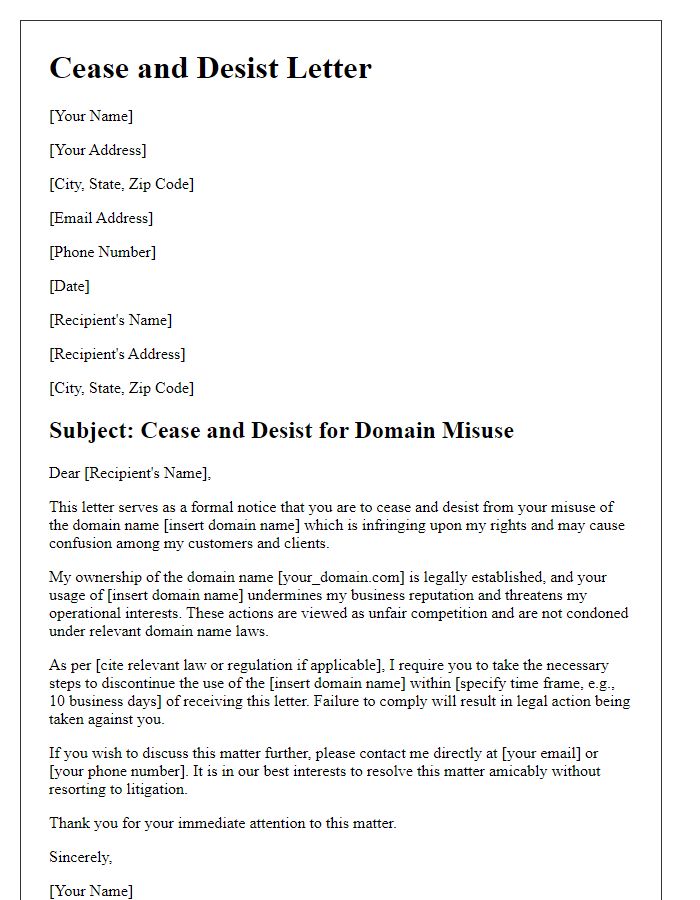In today's digital landscape, maintaining your online brand identity is more crucial than ever, especially with the growing threat of cybersquatting. If you've ever found your business name being misused or your domain name hijacked, you know how vital it is to take proactive measures. This letter template will guide you through the essential steps of requesting anticybersquatting protection, ensuring your intellectual property remains safeguarded. Ready to learn more about protecting your brand online? Let's dive in!

Clear identification of the trademark or brand.
In the realm of digital protection, the clarity of trademark identification plays a crucial role. A well-defined trademark, such as the iconic "Nike" logo, which represents a global sportswear brand, ensures brand integrity across various platforms. Comprehensive details include registration numbers, such as the United States Patent and Trademark Office (USPTO) registration, which signifies legal ownership. Specifics about the goods or services associated with the trademark, like athletic footwear and apparel, further establish its significance. Moreover, inclusion of the trademark's first use date and geographic locations where the trademark is actively employed, can fortify the case for anticybersquatting protections, safeguarding the brand's reputation and market position against potential infringements.
Evidence of the unauthorized domain usage.
Unauthorized domain usage, specifically in the case of cybersquatting, can significantly impact brand reputation and online presence. The domain name "example.com" currently registered to an entity not affiliated with the trademark holder "Example Inc." represents a clear case of potential infringement. Evidence includes website content that misleads consumers, advertisements promoting products or services that confuse the public, and claims of association with "Example Inc." despite no legitimate connection. Additionally, identical or closely resembling domains often result in increased traffic directed away from the authentic brand, leading to loss of revenue and customer trust. Documented instances of consumers encountering misleading information or choosing competitors due to domain confusion reinforce the urgent need for action against this unauthorized usage.
Legal basis for the claim.
Anticybersquatting protection requests often rely on legal statutes such as the Anticybersquatting Consumer Protection Act (ACPA) established in 1999 under U.S. law. This act provides a framework to combat the registration of domain names that are identical or confusingly similar to existing trademarks. Businesses operating under well-known trademarks, like Coca-Cola or Microsoft, seek protection against unauthorized registration by third parties aiming to profit from brand recognition. Legal proceedings can lead to the cancellation of domain names, awarded to trademark owners under these circumstances, based on a demonstrated bad faith intent of the registrant. Furthermore, international frameworks like the Uniform Domain-Name Dispute-Resolution Policy (UDRP) offer additional avenues for resolving disputes related to domainMing rights through arbitration and mediation processes.
Request for domain relinquishment or transfer.
Anticybersquatting actions can initiate a formal request for domain relinquishment or transfer under the Uniform Domain-Name Dispute-Resolution Policy (UDRP). Trademark owners, possessing registered trademarks (e.g., Apple Inc.'s trademarked products), may seek to reclaim domain names that infringe on their brands. Affected domain names, often registered by individuals or entities with no legitimate interest, can create confusion among consumers. The request process begins with a detailed complaint submitted to an accredited dispute resolution provider (e.g., the World Intellectual Property Organization, WIPO). Key information required includes trademark registration details, evidence of prior use, and explanations of the domain's bad faith registration. Successful resolution often results in the transfer of the disputed domain name to the rightful trademark owner.
Contact information and response deadline.
Anticybersquatting protection requests often involve issues surrounding domain name disputes. Parties, such as trademark owners, can submit a complaint concerning a domain name that infringes on their registered trademark. The contact information typically includes the complainant's name, address, email, and phone number, ensuring accessibility for communication. Additionally, a response deadline, often ranging from 10 to 30 days, is set to prompt the respondent to resolve the dispute or risk actions taken under the Uniform Domain-Name Dispute-Resolution Policy (UDRP), which is a policy established by the Internet Corporation for Assigned Names and Numbers (ICANN) to resolve such conflicts efficiently.













Comments